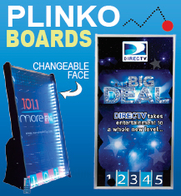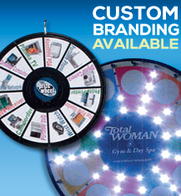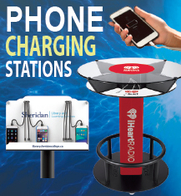Deep down we all know that quality trumps quantity but convincing management is often a difficult task.
When your senior manager compares your previous trade show results, which may have included hundreds of “so-called” leads to the high-quality leads you are now projecting, perhaps in the paltry double-digits, making the quality versus quantity argument can be a challenge…that is, unless you can prove it.
Proof takes a bit of work but if you adhere to the following steps, your next meeting with senior management will be a lot more rewarding for both your company and ultimately your career.
Rank your leads
Not all high-value leads are created equally. You may have some contacts who have a short term need for your products and services and others who have expressed a positive interest in working with you in the future but do not have an immediate need. Then there might be contacts that fall in the middle. These are the mid-range leads that have shown a definite interest, have a need that has been identified and want to work with your company as soon as they are prepared to focus on this need.
What we are doing with this simple analysis is dividing your potential contacts into three definite categories:
A = Immediate need
B = Mid-range need
C = Long term lead
You can expand your categorization of leads into as many categories as you deem necessary. For example ,it may make more sense for you to categorize leads by market sector, product interest, or level of buying authority.
Analyze the value of each category of lead
To create a measurement of value you need some company history. Talk to your sales people and learn the trends and patterns associated with the conversion of leads to sales. This analysis should uncover the average length of time it takes to convert each type of lead to a sale, the close ratio, the potential opening order, the cost of obtaining the lead and the net revenue of sales in a specific category.
The trick to this second step is to work in averages. For example, the length of time to convert a lead to a sale will vary greatly from one lead to the next. But when you compare a number of successful conversions a pattern begins to emerge.
Develop the formula
Take all of the details you have gathered to create a formula for measuring the success of your exhibit activities. Here is an example:
ABC Show
Category A – Immediate need
Number of projected A leads = 20
Average time to close = 4 weeks
Closing ratio = ¼1[1]
Cost of obtaining the lead = $ 500
Average opening order = $ 45,000
Revenue – net of cost = $20,000
ROI for category A
Net leads = 52[2]
Potential revenue (net leads X Revenue) = $100,000
Repeat this exercise for the other categories you have identified.
Calculate the non-monetary value
Not all leads lead to sales. Your exhibiting objective may be to create awareness of your brand with no intention of finding leads that close to sales or making media contacts. Finding a value in these activities has always been a challenge yet it doesn’t have to be. What’s needed is a focus on Return on Objective (ROO) rather than a Return on Investment (ROI) that was noted in the first example.
While ROO has a long term effect on the corporate bottom line, attempting to calculate its value in terms of revenue may be misleading. To accurately calculate ROO you need a bit more research. This time it’s with your marketing department who can help. What you will learn is the key messages that make up your brand experience and the profile of potential customers who your organization is targeting. In the situation where your objective involves public relations you will learn the names of the most influential media contacts as well as what and what cannot be said in an interview.
Your calculation now looks like this
ABC Show
ROO
Metric # 1 – Introducing brand message
Number of key decision makers and influencers attending the show = 300
Projected number of these people contacted during the show = 25
Number of completed surveys = 251[3]
ROO change in visitor awareness of brand = 50%
Metric # 2 – Media contacts
Names and numbers of key media contacts at the show = 35
Number interview is conducted = 10
ROO – Potential number of media mentions2[4] = 4
Integrate your findings
With your calculations of ROI and ROO in hand, you are now in a strong position to predict reliable outcomes for your exhibit expense. The final step is to integrate your calculations into your exhibit plans so you can easily determine your actual results against the projections. Now when you argue quality versus quantity you can back-up your argument.
About the Author:
Barry Siskind delivers over 100 keynotes, workshops, and seminars around the world each year. In addition to clients in North America, Barry has worked with exhibitors in Sao Paulo, Brazil; Bogotá, Columbia; Lisbon, Portugal; Bangkok, Thailand; Moscow, Russia; Zagreb, Croatia; and Quito, Ecuador. Barry Siskind, President of International Training and Management Company.




















